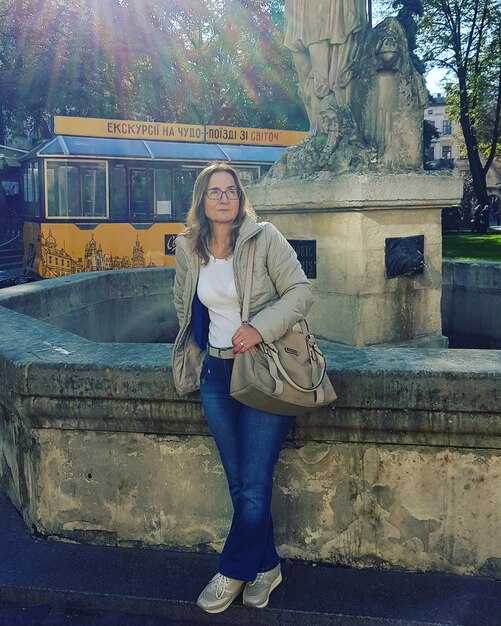Take the Metro first for most downtown trips. The Metro system operates six color lines and more than 90 stations across DC, Maryland, and Virginia, forming a mondo-class transit network. In peak hours trains arrive roughly every 4 minutes; off-peak, every 8–12 minutes. Get a SmarTrip card or use contactless payment, plan trips here. If you’re участником a local institute or university, campus shuttles connect with Metro at major hubs, keeping your day efficient.
Bus options fill gaps where Metro doesn’t reach. The DC Circulator runs on seven routes along Mall, Capitol Hill, Adams Morgan, and more, with a $1 fare and frequent daytime service (about 10 minutes between buses). Compared with driving, buses keep costs predictable for the daily commuter and for million residents who head downtown each day, and they connect markets, museums, and government centers with minimal transfers.
Walking remains fast and flexible for short hops. DC is walkable between major neighborhoods and landmarks, with signals that let you cross safely. A 20–30 minute walk can replace a short ride between several monuments, museums, and neighborhoods. Here are practical tips: wear comfortable shoes, check pedestrian signals, and plan routes with a live map to keep you on track.
Plan your day around a mix of transit modes to maximize time. For parking near stations, use parkmobile to locate spaces and pay quickly, keeping your plan on track. The team behind these guides at the institute shares data to help residents and commuters adjust their routes. If you head out during peak hours, you’ll keep those rides efficient and gain more time for what you travel to see.
Metro fares, maps, and SmarTrip taps
Get a SmarTrip card at any WMATA station kiosk and load funds before your first ride. Tap once on entry at rail fare gates or on the bus reader; you don’t tap to exit. This keeps your travel live and smooth, plus it enhances your live travel experience. Check your balance in the WMATA app or at vending machines to plan ahead. Typical rail fares range from about $2 for short hops to around $6 for longer trips; bus fares start at about $2. A daily cap applies; use the fare calculator to estimate totals for your planned routes.
Fares, SmarTrip taps, and transfers
- Fares: Rail rides generally range from about $2.00 to $6.00 depending on distance; bus rides start near $2.00.
- Tapping: Tap on entry with SmarTrip at rail fare gates or on bus readers; you won’t tap again when you exit on rail. Keep your balance visible in the app to avoid surprises.
- Transfers: With SmarTrip you can transfer between bus and rail within a 2‑hour window on the same fare; you can ride multiple segments within that window. They let you switch between routes without paying twice for one continuous journey.
- Planned costs: Check a live map or the WMATA calculator for your exact route, and expect a daily cap around $15–$16 depending on combinations of bus and rail. Earnings from smart routing come from saving time and avoiding extra rides.
- Tips from riders: travel influencer michele often shares live tips for saving on expenses by pairing tours between destinations and keeping a small balance for last‑minute rides.
- Limited offers: Look for limited promotions in the WMATA app or at partner brand sites for discounts on group rides or city tours. Offers vary by platform and time of year.
Maps, locate stations, and plan between destinations
- Maps: Use official WMATA maps and live service status boards to locate lines, stations, and changes in service; the color coding makes planning between lines straightforward.
- Locate: Enter your destination in the app or Maps to locate the nearest station and walking routes; you’ll see walking times, transfers, and platform changes.
- Between destinations: The planner shows step‑by‑step routes, with transfer points, estimated travel times, and walking distances to exits and street level.
- Art and platforms: Some stations feature rotating artwork galleries (gallery godcgos); take a moment to scan a piece between connections at your destination platform.
- Platform tips: On busy days, head to the platform ahead of schedule to secure a rail car with fewer crowds; the system highlights service changes that affect platform positions.
- Plan with brand and travel: The brand offers and app platforms let you save routes and note favorite destinations for future trips, making repeated DC travel smoother.
- Carsharing and tours: If you mix modes, plan a drop‑off near a metro station to minimize walking; many tours depart from major stations to maximize ride efficiency.
- Services and changes: Check live status for line closures or maintenance; maps update quickly to reflect changes in services and platform drops.
Where to buy and reload SmarTrip
Where to buy

Purchase SmarTrip at Metro station vending machines or WMATA ticket offices. You can also find SmarTrip at partner retailers across many neighborhoods, including american stores like CVS, Walgreens, Target, and other outlets. The coverage extends across urban cores and federal routes, with a gallery of partner locations listed on WMATA’s site. At WMATA ticket offices, staff can help with tickets or SmarTrip, and the details about any card fee and stored value are clear to you. People rely on these cards for smooth rides across the region.
Reloading options
Reload online at SmarTrip.com or through the WMATA app on your phone, and this makes it easily possible to top up from anywhere. In-person reloads occur at vending machines and ticket offices using cash or a card. If you head to a stadium for a match or athletic event, you can top up before or after the event to keep your travels smooth. The SmarTrip system connects across many meters and routes, so you stay ready for your next ride. uber rides between venues and stations are common, but the card remains handy for straight rides back to the metro. The process stays transparent about balance updates and details for your trips.
Bus routes, schedules, and fare payments

Plan ahead: load a SmarTrip card or other payment method, then please use the WMATA trip planner to map your bus routes and transfers; this will help keep commuters on track and reduce wait times. The plan includes real-time updates and step-by-step directions.
Start from high-coverage corridors like 14th Street, Georgia Avenue, and Wisconsin Avenue; most local buses run from early morning to late evening, with late-night service on weekends along core routes; you can rely on real-time arrival boards at stops and the WMATA app for the next bus to arrive, which serves both bus and rail connections.
Payment options include SmarTrip, contactless cards, and cash on board where accepted; transfers are valid for 2 hours after payment, letting you switch routes without paying again; tickets to events or venues can be purchased separately, and some programs include transit passes through local partners.
In the Gallery Place area, galleries and theaters cluster along central routes; the local services run frequently, and artists in the district are thrilled by easy access to openings and performances; many routes includes stops near art venues, offering convenient access for pedestrians and car-free visitors.
Common challenges include bus bunching and delays from traffic; commuters face crowded buses during peak hours; to cope, plan extra time, use alternate options like taxis or peer-to-peer ride-hailing apps, and look for party-night services on weekends on major corridors; these options can extend coverage when a route is late.
post tips and updates from riders; отредактировано участником, updated content reflects user feedback and local insights; your input helps improve payment guidance and route details.
Metro-bus transfers: how to switch
Start transfers at major interchanges like Gallery Place-Chinatown, L’Enfant Plaza, or Union Station to minimize walking and stay within the same network window. The Metro connects to multiple bus routes there, so you can switch without backtracking. Have your SmarTrip or contactless card ready and tap when you board the next vehicle, which keeps the transfer clean and predictable. This approach has a practical impact on total trip time and reduces back-and-forth across the downtown core.
Follow clear bus signs as you exit the station; look for the designated drop-off areas and transfer corridors that align with the bus stops. If you plan to use zipcar or ride-sharing in addition to transit, coordinate your pickup time so you arrive at the stop within the transfer window and avoid missing a connection. Those small timing checks usually save you minutes and reduce stress.
The transfer window typically spans about 2 hours across the WMATA network, but check the screen at the station or their card’s app for the latest details. If you miss the window, you can still ride, but you may incur another fare, so plan to connect at a stop where the next bus has the best chance to arrive within that period. Zones and service areas are shown on wayfinding boards and the department’s online maps to help you map routes across the major corridors.
Di solito, le linee a frequenza più alta passano ogni 10-15 minuti durante le ore di punta, mentre alcune linee hanno intervalli più lunghi. Le valutazioni nell'app riflettono i dati in tempo reale sull'affollamento e sulla puntualità, aiutandoti a scegliere una connessione che riduce i tempi di attesa. Tutti traggono vantaggio da un rapido controllo degli ultimi avvisi e di eventuali manutenzioni programmate che potrebbero influire sulle fermate vicino al quartiere delle gallerie.
Oltre a treni e autobus, la rete include taxi e opzioni di ride-sharing, utili per i collegamenti a tarda sera o quando si viaggia con bagagli. Il dipartimento fornisce consigli su opzioni alternative; se stavi pianificando un trasferimento flessibile, puoi aggiungere un segmento di ride-sharing per accorciare una lunga camminata. Queste opzioni sono state progettate per la flessibilità.
Percorsi pedonali: sicurezza, attraversamenti e scorciatoie
Scegli una posizione con marciapiedi ben illuminati, passaggi pedonali chiaramente segnalati e segnali affidabili per ridurre al minimo i rischi durante gli spostamenti. Questi dettagli avvantaggiano residenti, pendolari e visitatori, soprattutto nelle ultime ore del mattino.
Cerca incroci con pulsanti pedonali e timer di conto alla rovescia, attraversa solo agli angoli e fai attenzione ai veicoli che svoltano. Questo ti rende visibile ai motociclisti e ai ciclisti che condividono la strada e migliora la sicurezza per tutti. Questi attraversamenti offrono opzioni più sicure per tutti gli utenti.
Pianifica scorciatoie pratiche che rimangano sui marciapiedi o spartitraffico, non attraverso vialetti. Utilizzare percorsi consolidati vicino a gallerie o aree di mercato ti aiuta a rimanere alla luce del giorno e vicino all'illuminazione, riducendo al contempo i tempi di percorrenza. Se il tempo o la folla lo richiedono, porta con te attrezzatura riflettente extra e una luce portatile per le passeggiate serali. Un'altra opzione è quella di modificare il percorso per evitare isolati congestionati e utilizzare questi corridoi più sicuri.
Coordina i punti di drop-off vicino alle fermate dei mezzi pubblici e considera il carpooling o un breve tratto in autobus per il segmento finale. Fornire una segnaletica chiara e un portale di pagamento all'ingresso aiuta i passeggeri e i residenti a gestire la camminata senza stress. Qui puoi controllare gli ultimi drop e condividere il percorso con un altro passeggero.
Nelle ore del mattino, tieni il telefono montato e usa segnali acustici agli attraversamenti. Il tuo ruolo di pedone è importante qui: evita le cuffie che bloccano i suoni dei veicoli e fai attenzione alle auto e alle bici che si avvicinano mentre attraversi.
Quando pianifichi i percorsi, considera un mercato o una galleria come punto di riferimento; questi centri offrono panchine e ombra. Le mappe più recenti mostrano contatori e aggiornamenti in tempo reale per le finestre di servizio, oltre a un portale di pagamento semplice per carte di trasporto, app per telefoni o pagamenti contactless. Utilizzando questi strumenti, puoi pianificare una passeggiata sicura e a basso stress mentre vai al lavoro o incontri un amico.
Strumenti di pianificazione: app e aggiornamenti in tempo reale
Inizia con un unico hub di pianificazione affidabile: installa l'app WMATA e una seconda app multimodale per visualizzare arrivi in tempo reale, tempi di attesa e avvisi di servizio per treni, autobus e navette su richiesta in tutta l'area della metropolitana di DC.
Scegli app che forniscono il tracciamento del veicolo in tempo reale, transparent avvisi e known incident notices. Look for multi-modal routing that offers rail and on-demand opzioni in un'unica visualizzazione federal corridoi e citys aree, così puoi confrontare i percorsi rapidamente invece di destreggiarti tra le app.
Gli aggiornamenti in tempo reale ti permettono di decidere su strada se aspettare, passare a un autobus o prendere un passaggio occasionale. Puoi vedere l'ETA, la posizione in tempo reale dei veicoli e gli arrivi previsti, aiutando i residenti locali e i visitatori a pianificare even quando si prende il strada alone oppure con altri.
Concentrati sulle funzionalità che funzionano su più piattaforme areas e citys quartieri: notifiche per interruzioni, percorsi alternativi e l'opzione di tracciare più viaggi in parallelo. Transparent i dati aiutano i residenti locali e i visitatori a sapere cosa aspettarsi e riducono le congetture.
Per viaggi occasionali, on-demand i servizi riempiono i vuoti tra i percorsi fissi; per i viaggi più lunghi, controlla vanpooling e le opzioni di pool per condividere corse con i colleghi o altri visitatori che percorrono lo stesso corridoio. Ciò riduce i tempi di attesa e supporta la mobilità attraverso il citys sistema.
In airports e vicino federal strutture, pianifica con gli avvisi dell'area cittadina e un feed di tracciamento affidabile per evitare ritardi. Le app offrono drivesmart consigli per ottimizzare i tempi e ridurre lo stress nei centri trafficati.
From a local prospettiva, questi strumenti sono progettati per everyone: visitatori, residenti e viaggiatori singoli. Tieni un'app per i feed ufficiali e un'altra per on-demand opzioni per mantenere un transparent view of the strada e mantieni la tua mobilità fluida attraverso il mondo.

 Getting Around Washington DC – Metro, Bus, and Walking Tips">
Getting Around Washington DC – Metro, Bus, and Walking Tips">

Commenti